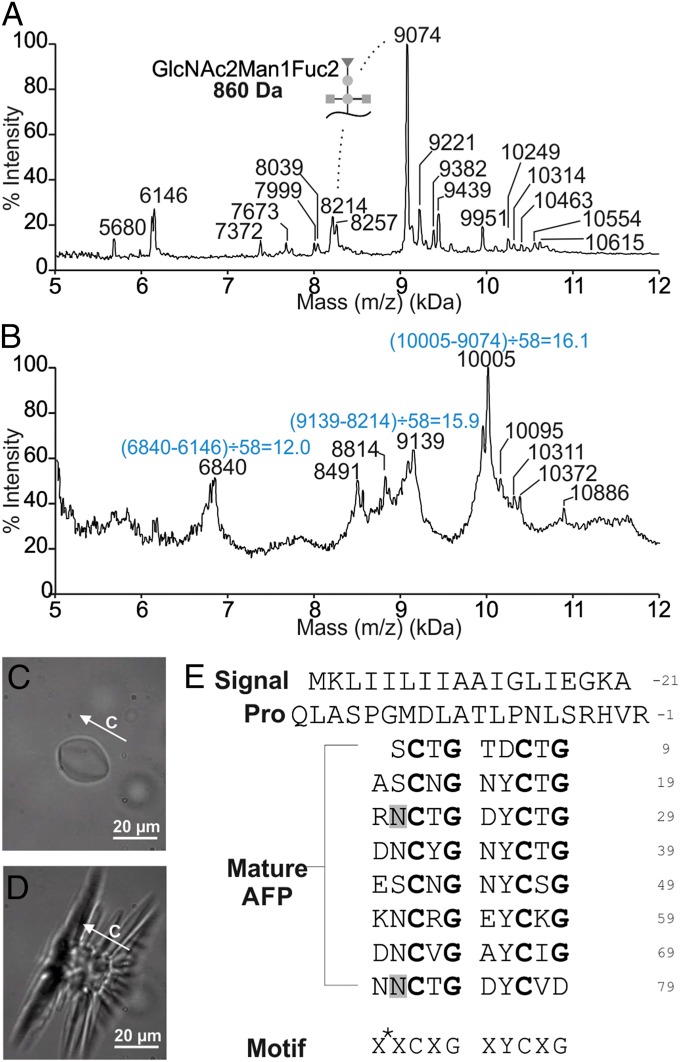Fig. 2.
Midge antifreeze protein (AFP) is expressed as a family of hyperactive isoforms with multiple cysteines and shapes ice in a manner similar to hyperactive AFPs. (A) MALDI mass analysis of the third ice affinity purification fraction containing AFPs purified from adult midges. The difference in mass between the 9,074- and 8,214-Da species corresponds to a single GlcNAc2Man1Fuc2 modification. (B) MALDI mass analysis following reduction and alkylation of cysteine residues. The mass differences divided by 58 give the number of Cys in each of the major isoforms. (C) Morphology of a single ice crystal in a solution of midge AFP. (D) Explosive growth of the ice crystal when the temperature is lowered below the freezing temperature. The c axis and scale bar are indicated in C and D. (E) Midge AFP sequence (GenBank accession no. KM102729). The signal peptide, pro sequence, and mature protein regions of the midge AFP are labeled. The consensus sequence motif is presented below, with X* representing an acidic or basic residue, and X representing any residue. Glycosylation sites are highlighted in gray. The strict cysteine and glycine repetitions are highlighted in bold.

